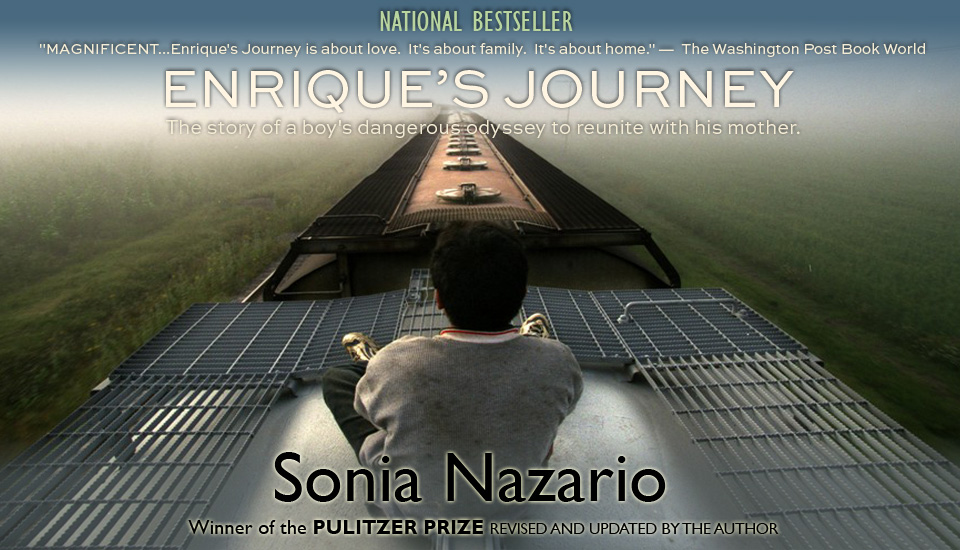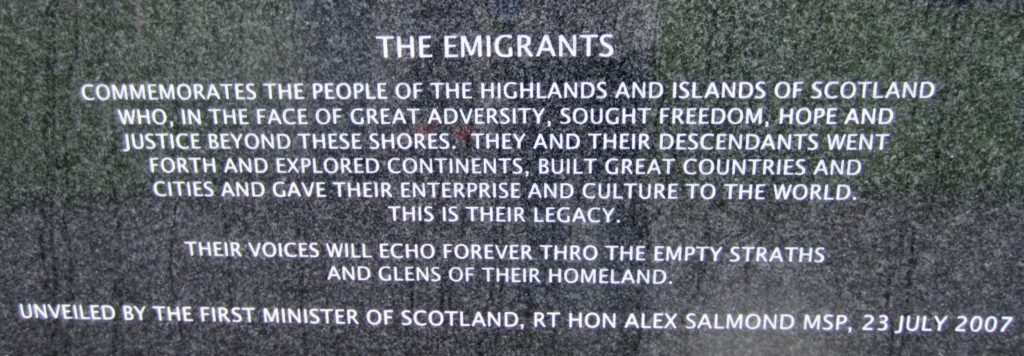Immigration Week at CHQ

For the fourth year in a row we were fortunate to spend a week at Chautauqua in western New York with our friends Peg and Jack. With great concerts, interesting lectures, the beautiful Charlotte Ballet, the masterful Vienna Piano Trio, a riveting production of Thornton Wilder’s Our Town, cool weather, and a kayak ride with Peg, it was my favorite week of the year so far. The theme for July 12 – 18 was Immigration, inspiring dinnertime discussions, family remembrances, and a marvelous presentation of Peter Boyer’s “Ellis Island” by the combined forces of Chautauqua’s Symphony Orchestra and Theater Company.

Sonia Nazario’s lecture stood out from all the rest. Author of the Pulitzer Prize-winning Enrique’s Journey: the Story of a Boy’s Dangerous Odyssey to Reunite with his Mother, Nazario spoke with passion about what motivates people in Central America to try to find a better life in the US. She met Enrique in northern Mexico and traveled with him to learn why he would take such a dangerous journey. Then she followed his path herself, even riding atop trains in Chiapas. Nazario is a cum laude graduate of Williams College, who landed a job as a Wall Street Journal reporter at age 21 and later joined the Los Angeles Times.
After reading Enrique’s Journey and hearing her speak, I signed up for her afternoon class, “Writing Compelling Non-Fiction.” What I learned is that for “immersive journalism” (an approach she shares with Katherine Boo, who wrote about Indian slums in Behind the Beautiful Forevers), she uses less than one-tenth of the material she gathers. For Enrique’s Journey, she took eight trips in twelve years totaling 12,000 miles, filled 110 notebooks, and spent six months writing and re-writing. It’s an important and very moving book, which should be required reading for politicians.
Patrick Griffin, Chair of the History Department at Notre Dame University, spoke on Irish immigration and how it changed over the centuries:
- 1700s: Irishmen were one third of the Continental Army during the American Revolution, brothers-in-arms with American colonists, fighting British oppression.
- 1789 – 1845: one million Irish, mostly Catholic, came to US to dig canals and build railroads; earlier Protestant Irish called themselves Scotch Irish to distance themselves from Catholic newcomers
- 1845-55: two million Irish left their country because of the potato famine; from 1855-1920: three million Irish came to the US.
By 2006 Ireland was welcoming immigrants from Eastern Europe, as we observed on our 2006 trip to Dublin.
A European perspective came from Ian Goldin of Oxford University, author of Exceptional People: How Migration Shaped Our World and Will Define Our Future, which was also the title of his lecture. Goldin grew up in South Africa. His father was a refugee from pogroms in Russia; his mother, from Nazis in Austria. After demonstrating against Apartheid, he, too, became a refugee, emigrating to England. In UK, he says, the word is spelled emigration, because historically it has been an outflow. I was reminded of the memorial statue we saw in Northern Scotland last year.
Goldin took a long view by noting that we all started out in Africa; the first “immigrants” came to North America 20,000 years ago. He also pointed out that in the massive movement of people fleeing Europe in the 20th century, half of those who landed in South America and a third of those who came to the US eventually returned home. Most people really want to live at home, he contended. Migration is expensive–those who want to leave their home country have to accumulate means. Spanish and Greek kids are not emigrating, despite economic distress.
More facts from Goldin: Documentation (passports, etc) began only 100 years ago. The world has 100 more countries than in it in 1915. Still, the impact on receiving countries is overwhelmingly positive;
- 80% of Silicon Valley entrepreneurs are immigrants or first generation
- 50 million people in Latin America get remittances from relatives in the US
- Skilled immigrants are free gifts–we didn’t have to school or train them
Imagine no immigration? that’s North Korea. No border control? that’s Germany. How many immigrants can we accept? 98% of the population of Dubai is foreign; 54% of Toronto’s; 35% of London’s. Interesting concepts for our leaders to consider.
Yet another interesting afternoon talk concerned how Chautauqua changed from its white Protestant origins to become the diverse place it is today. Though efforts were made to attract Catholics and Jews, the Chautauqua movement, which once sprouted in a hundred US locations, declined during the 30’s, partially due to its failure to incorporate immigrants. Old-timers were afraid they would change American values. Nowadays, the original Chautauqua on Lake Chautauqua in New York, contributes to the evolving concept of what it means to be an American: learning to adapt, welcoming new ideas, and valuing individuals.

Leave a Reply